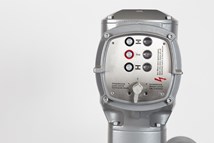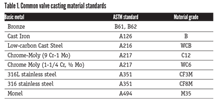VMA Advances Member Issues on Taxes,Tariffs and PFAS Regulation
VMA News updates
#VMAnews #standards
VMA continues to lead on several key policy fronts that directly impact its members and the broader flow control sector. In recent months, VMA has ramped up its engagement with lawmakers and regulatory agencies, providing targeted advocacy and education on tax reform, tariff impacts and the growing regulatory framework surrounding PFAS substances. These efforts reflect the association’s ongoing commitment to ensuring a positive business operating environment safeguarding the competitiveness and sustainability of the valve manufacturing industry for our members.
On the legislative front, VMA has supported the inclusion of several pro-manufacturing provisions in the so-called “One Big Beautiful Bill.” These include the restoration of immediate R&D expensing for domestic research, full expensing of capital equipment purchases, restoring the corporate tax rate of 21%, as well as others. Additionally, the bill also expands 529 savings plans to include postsecondary training and credentialing, such as certifications for welding and other manufacturing trades.
In late June, VMA joined over 300 manufacturing organizations in a unified letter to Congress urging swift passage of this tax package. The bill was then passed by congress on July 3, 2025, and signed by the President on July 4, 2025. VMA will hold a webinar for its members August 27, 2025, to further explain additional aspects of the bill pertinent to our industry.
VMA has also voiced industry concerns regarding an outright ban of all PFAS substances, and specifically with policy that treats all PFAS substances in the same manner. VMA also supports the need to have our industry’s products noted as a “currently unavoidable use” of PFAS. This spring, VMA submitted formal comments to the state of Minnesota’s record reporting proposed rule. VMA is also working with other partners to education federal policy makers on the needed for any PFAS definition to exclude fluoropolymers, which are essential to various governmental and industrial applications but have not been shown to pose risks to human health or the environment.
Tariff policy remains a dynamic and pressing issue. VMA continues to host a series of webinars to help members stay current on the evolving landscape. Recent updates include a temporary pause in reciprocal tariffs from July 9 to August 1, and new tariff actions targeting imports from the EU and Mexico. A presidential proclamation issued on June 4, 2025, also doubled Section 232 tariffs on steel and aluminum products — from 25% to 50% — with no exemption for goods in transit. This policy change could have significant cost implications for the valve and flow control industry, which relies heavily on these materials. VMA will hold a webinar on August 11, 2025, for its members to review and provide information on the latest information and tariff developments.
RELATED CONTENT
-
New Requirements for Actuator Sizing
After decades of confusion, the American Water Works Association has created new standards for actuator sizing that clear up some of the confusion and also provide guidance on where safety factors need to be applied.
-
Valves in Oxygen Service
In his presentation at VMA’s 2017 Technical Seminar, Kurt Larson, a process control engineer for Air Products, spoke about the inherent danger of the oxygen production business and how it is particularly important for end users and valve manufacturers to work closely together.
-
Free VMA Webinar: Valve Materials, Part 2
Tuesday, June 7, 2022 at 3 p.m. EDT.







 Unloading large gate valve.jpg;maxWidth=214)


